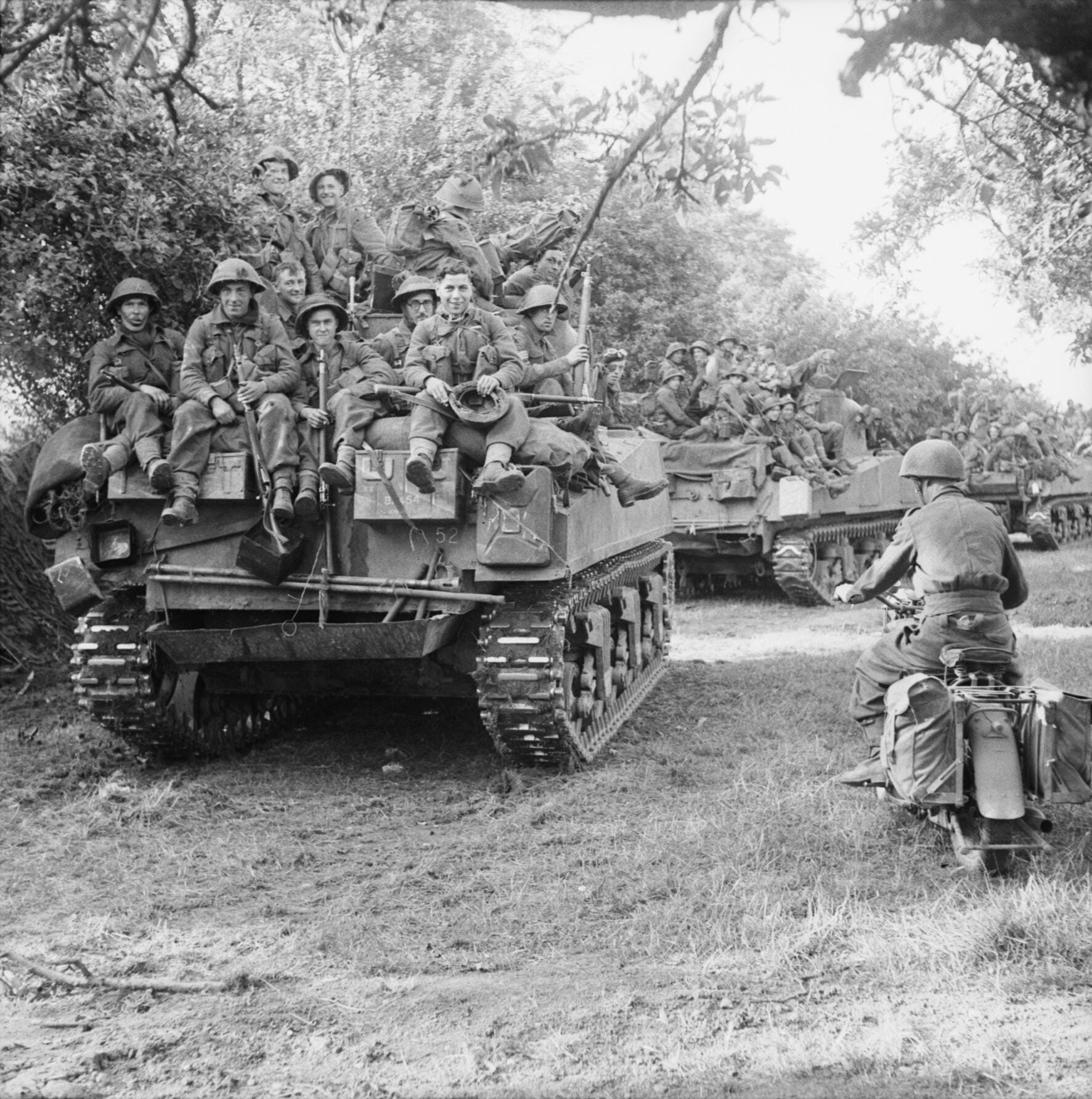Sword Beach and Beyond: The Staffordshire Yeomanry's D-Day Story
On June 6, 1944, Allied forces launched the largest seaborne invasion in history, known as D-Day, marking the beginning of the liberation of Western Europe from Nazi occupation. Among the many brave units involved in this monumental operation was the Staffordshire Yeomanry, a volunteer cavalry unit serving in the 27th Armoured Brigade as part of the Second British Army. They were likely the only conventional tank unit to land on Sword Beach, playing a crucial role in the success of the Normandy landings.


Landing on "White" Beach
The Staffordshire Yeomanry was part of the British 27th Armoured Brigade, which landed on "White" Beach, a sector of Sword Beach. Their primary objective was to secure the high ground and establish a bridgehead to enable the safe landing of additional troops and armour. Despite facing intense shelling from German forces, they pushed forward, securing the beachhead, which was crucial for the subsequent waves of Allied forces.
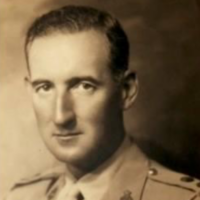
A Crucial Move to High Ground
Upon landing, a squadron of tanks from the Staffordshire Yeomanry was ordered to move towards the high ground of the Périers-sur-le-Dan ridge, which overlooked the beaches. This strategic move, believed to have been pre-planned by Lieutenant Colonel Eadie, proved crucial to the success of the Normandy landings. By holding this vantage point, they provided essential cover and observation, significantly aiding the overall operation.
Establishing the Bridgehead
One of the significant achievements of the Staffordshire Yeomanry was their success in establishing a firm bridgehead. This was essential for the subsequent waves of troops and equipment that followed. By holding their ground against German counterattacks, they ensured that the landing operations could continue as planned, facilitating the advance of Allied forces into Normandy.
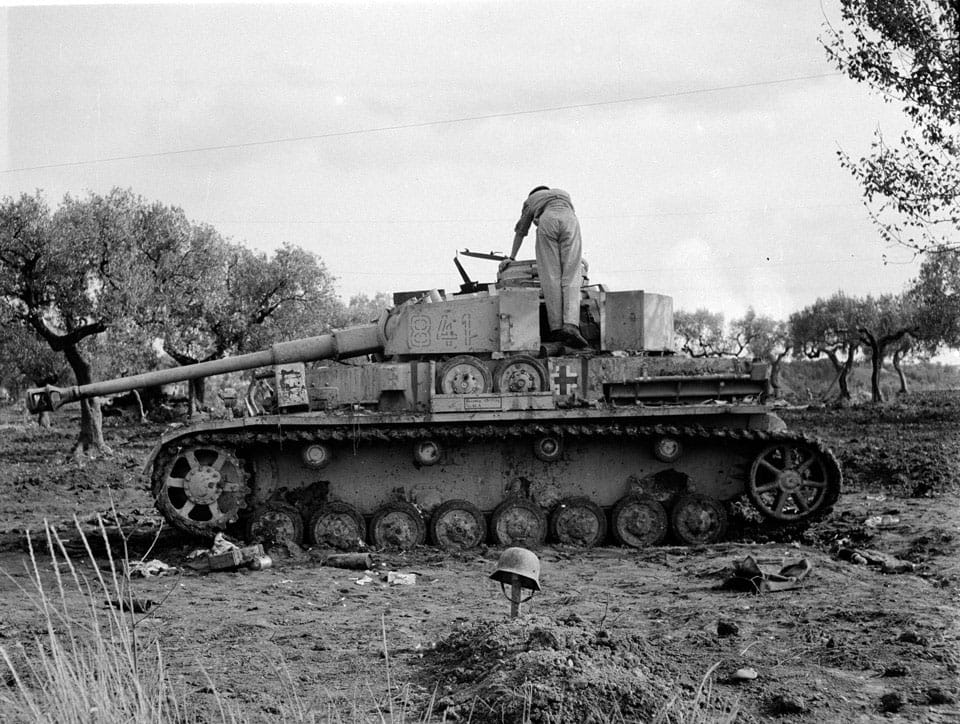
Combat and Tactical Successes
During the initial phase of the landings and the subsequent days, the Staffordshire Yeomanry engaged in numerous combat operations. They successfully destroyed several enemy tanks, including the formidable Panzer IV Special and provided critical support to the infantry. Their actions not only protected the landing zones but also helped in neutralising key German positions that posed a threat to the advancing Allied forces.
Supporting the Infantry
In the days following D-Day, the Staffordshire Yeomanry continued to support infantry units, particularly in clearing strategically important areas like Lebisey Wood. Despite facing reinforced German positions and suffering heavy casualties, their relentless efforts contributed significantly to the overall success of the Allied operations in Normandy. Their ability to hold and secure high ground provided valuable observation and artillery support, further aiding the Allied push inland.
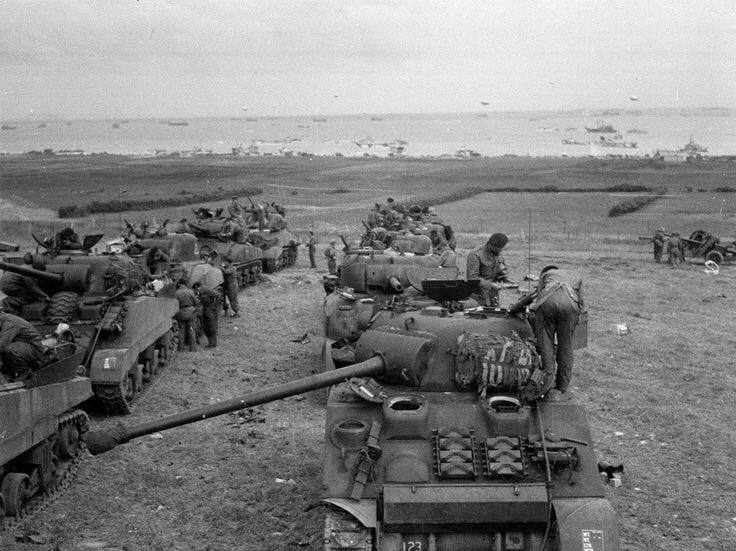
First-Hand Account: Excerpt from Regimental History
Lieut.-Commander P.K. Kemp's regimental history provides a vivid account of the Staffordshire Yeomanry's experiences during the Normandy landings:
"It was a rough crossing but, apart from a certain amount of seasickness, an eventless one. A final briefing and issue of maps was made during the passage, and dawn on 6th June found the convoy lying just to the westward of the mouth of the River Orne, opposite “White” beach, the most easterly point of the landing area. Down to the west, almost as far as the eye could see, the sea was covered with craft of all descriptions, infantry and tank landing craft inshore and the support ships of the Royal Navy farther out, ready to bombard strong points ashore as required."
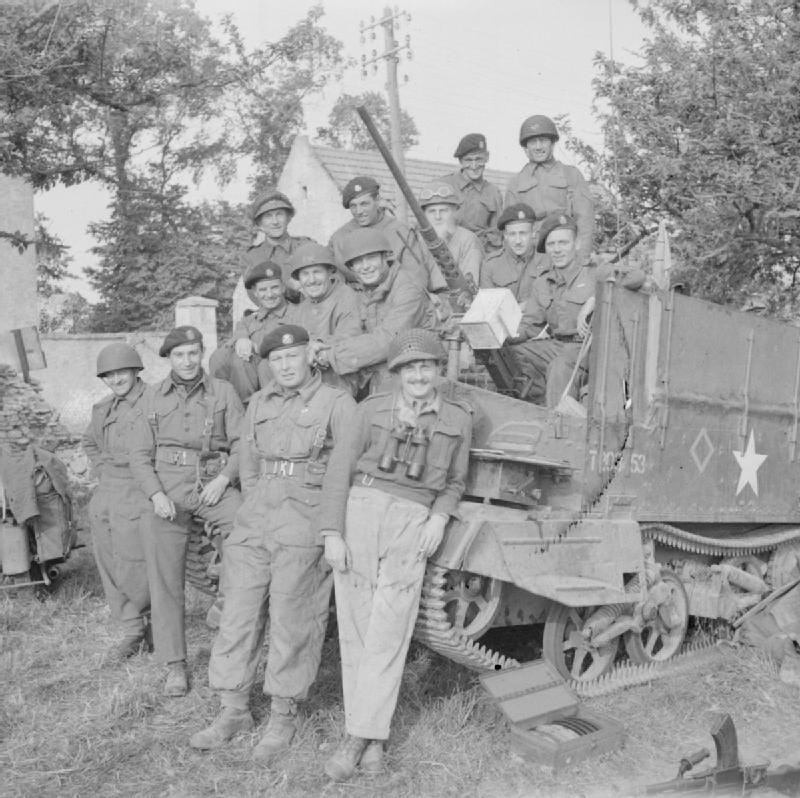
Legacy and Commemoration
The bravery and effectiveness of the Staffordshire Yeomanry during the D-Day landings have been commemorated in various military histories and remembrance events. Their contribution is a testament to the vital role played by local units in the broader context of World War II. This year, events to mark the anniversary include a service at the National Memorial Arboretum in Alrewas. The Duke and Duchess of Edinburgh will join veterans and their families at the Royal British Legion’s Service of Remembrance on Thursday, June 6.
In Victoria Park, Stafford, families are invited to enjoy live entertainment around the bandstand from 6pm, featuring local poets, artists, and the Stafford Military Wives Choir, followed by the official Beacon Lighting Ceremony at 9pm. Additionally, at Queens Gardens in Newcastle, a beacon will be lit at 9:15pm, following a civic church service at St Giles Church at 8pm and a walk to Castle House for the ceremony.
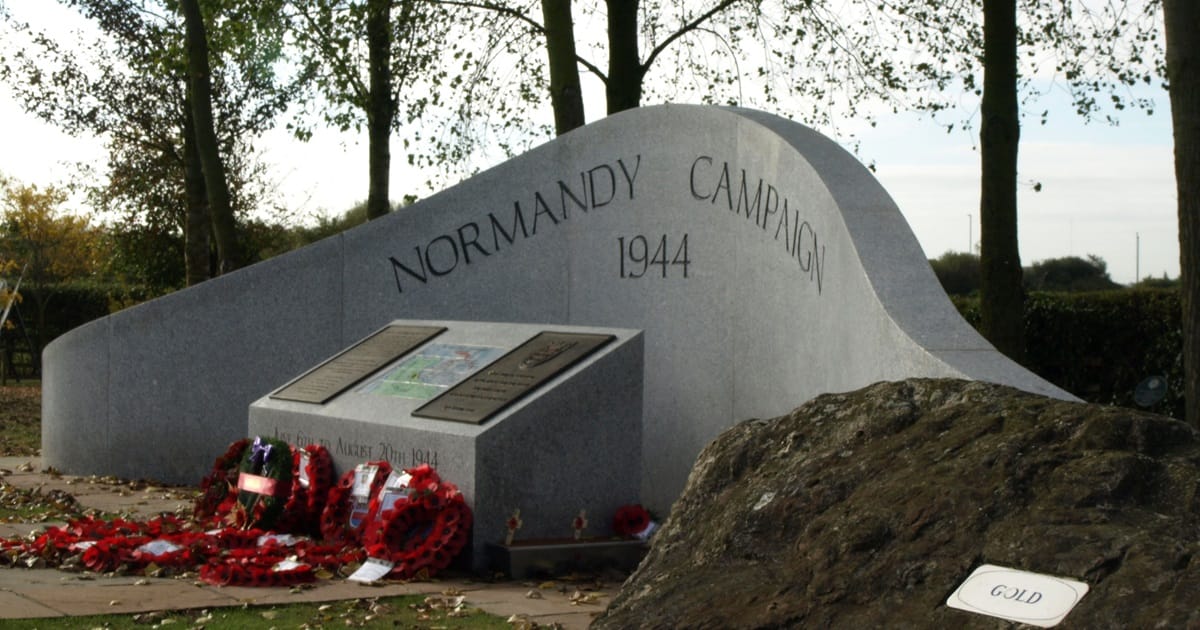
Legacies of the D-Day Exhibition
To honour the service and sacrifice of the D-Day Generation, the "Legacies of D-Day" exhibition will be on display from June 6, 2024. The exhibition will be held at the British Normandy Memorial in France and the National Memorial Arboretum in Staffordshire. Open to all members of the public, this exhibition aims to commemorate the veterans of D-Day and their significant contributions.
The story of the Staffordshire Yeomanry on D-Day exemplifies the courage and determination of Allied forces during one of the most critical operations of World War II. Their actions not only secured a crucial beachhead but also paved the way for the liberation of Europe from Nazi tyranny.
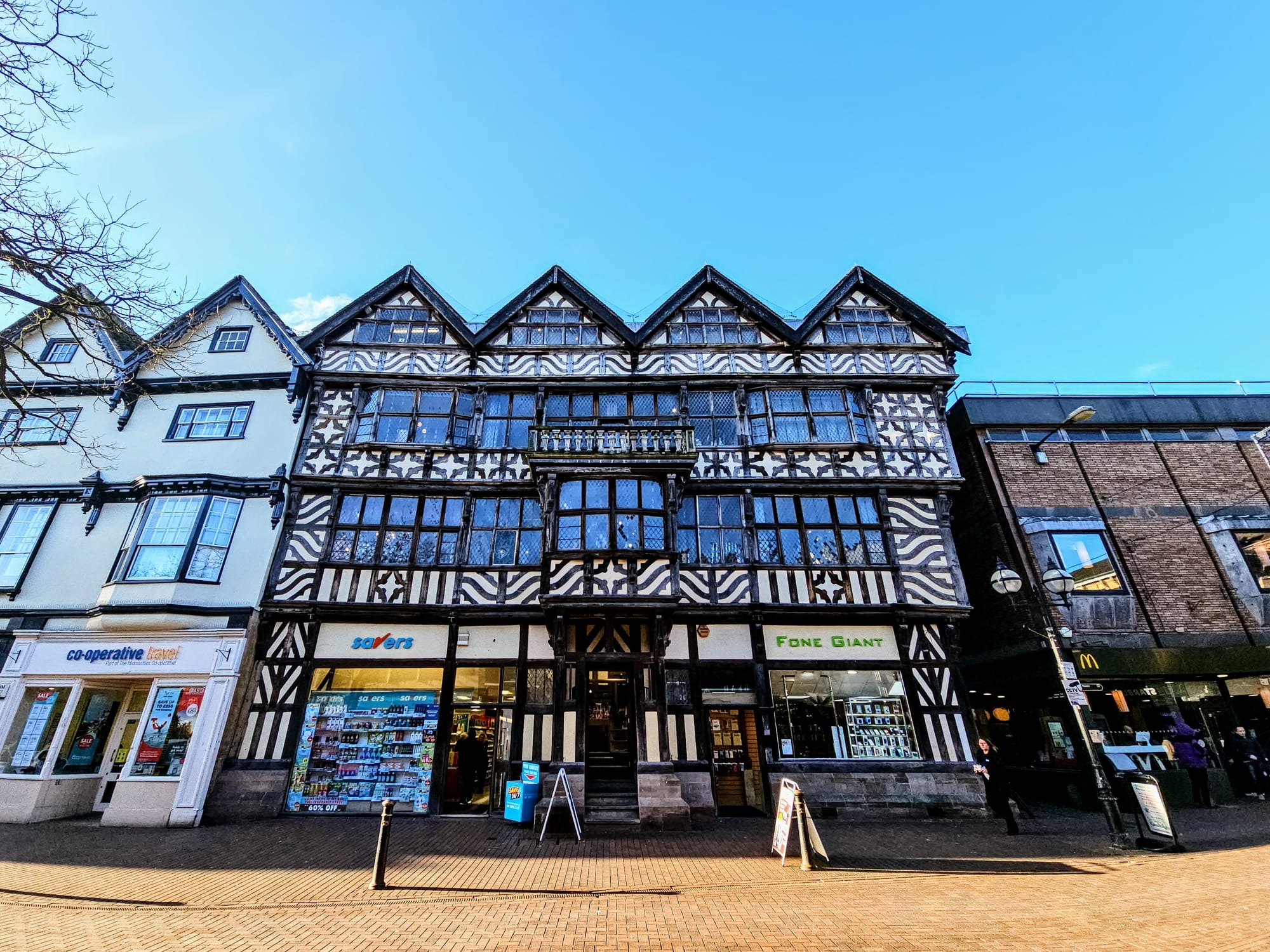
Visit The Staffordshire Yeomanry Regimental Museum - Free
The Staffordshire Yeomanry Museum, located within the historic Ancient High House in Stafford, offers a comprehensive and engaging exploration of the history and achievements of the Staffordshire Yeomanry. This museum is dedicated to preserving and showcasing the rich heritage of this distinguished cavalry unit, which played a significant role in various military campaigns, including the D-Day landings. Visitors can enjoy an array of exhibits, including uniforms, medals, weaponry, and personal artefacts that tell the story of the regiment's service from its formation to the present day. Housed in one of the finest Tudor buildings in the country, the museum's setting adds a unique and atmospheric backdrop to the displays. The museum is free to enter, making it an accessible and invaluable resource for those interested in military history and the local heritage of Staffordshire. Whether you are a history enthusiast or a curious visitor, the Staffordshire Yeomanry Museum provides a fascinating insight into the bravery and dedication of this remarkable regiment.

Check out my online shop for my local photography and art
Check out my recommended reading list
